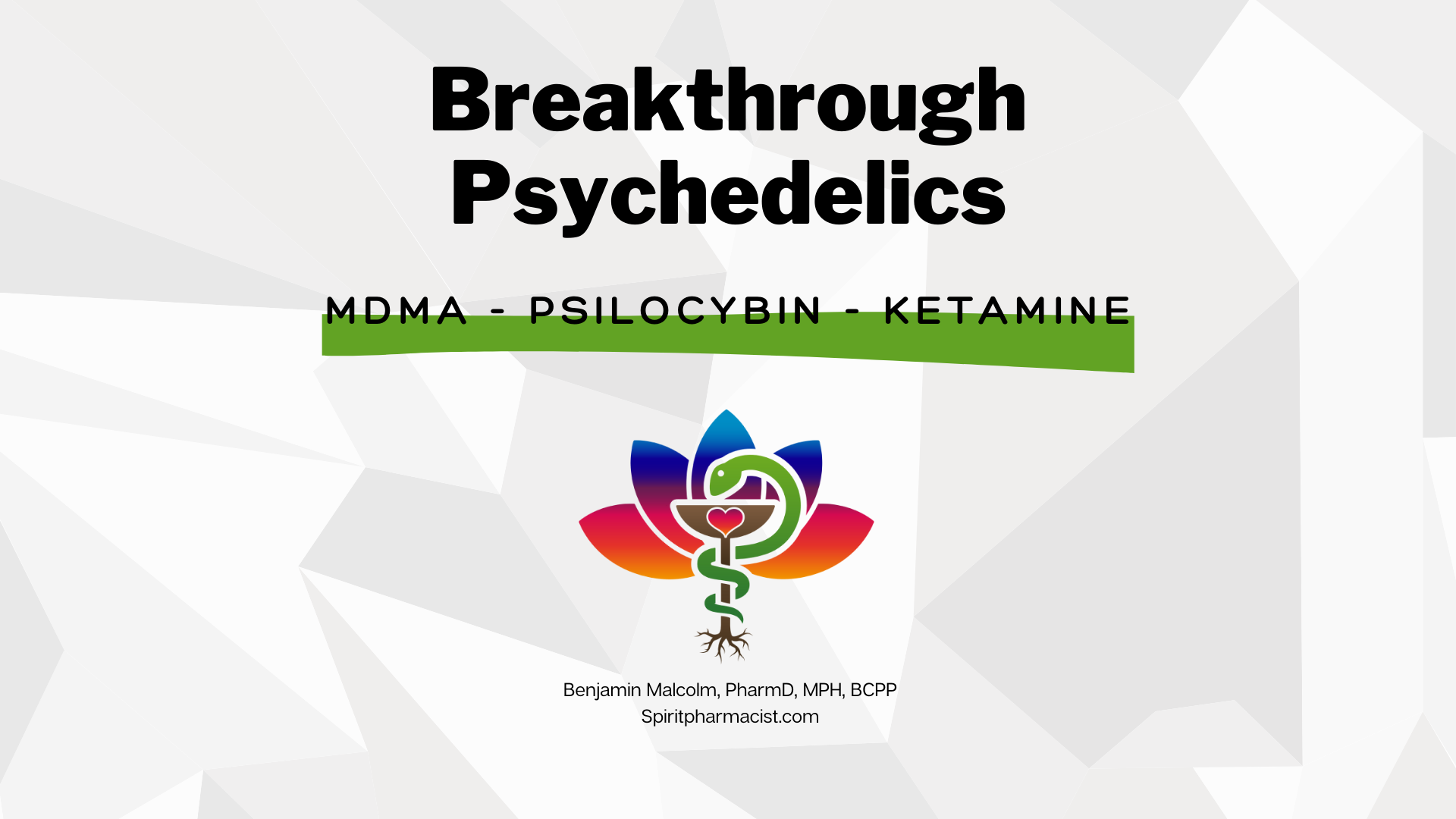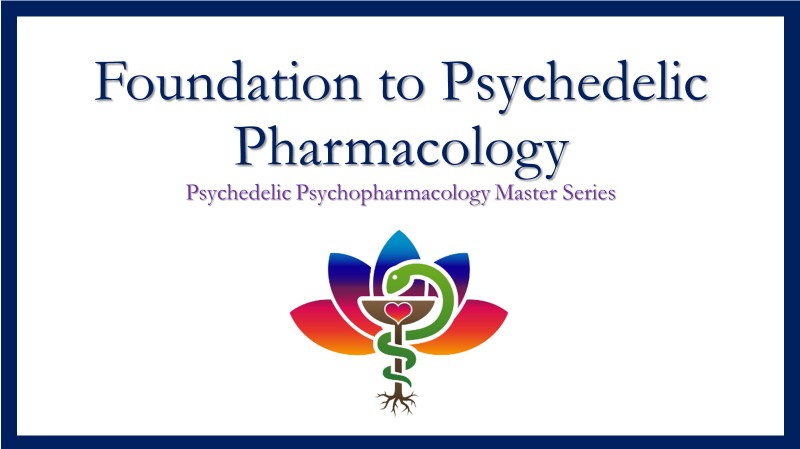Directing to the Divine among Native American Peyotists
Dec 09, 2020
***This essay was written for my senior year writing course during my undergraduate studies when I was 22 years old (2008). I chose not to edit it before posting, with the intention of it serving as a time capsule. To be able to read it and understand more of who I was then and how I came to be where I am now. I remember spending countless hours immersed in books on religion, anthropology, and drugs to write this. It was a formative. It’s rough around the edges, I cringe reading certain passages, I disagree with some aspects of what’s written, yet overall the spirit of Spirit Pharmacist is there, albeit immature.***
“The white man goes to his church and talks about Jesus, the Indian goes to his teepee and talks to Jesus”-Quanah Parker
Peyote is a profound experience for anybody, yet for the individual Peyotist experience is heightened by the knowledge and attitude surrounding authentic religious practice. Consistency and reproducibility of religious experience occurs within Peyotism in an unprecedented fashion for psychedelic drugs, yet the sacrament peyote appears to have a pharmacological action similar to other psychedelic compounds suggesting that religious experience should not be attributed solely to peyote’s influence on the user and instead the history, ritual, and predisposition of faith amongst members of Peyotism.
Native Beginnings and Existing Ideology
Peyote, Lophophora williamsii, is a small spineless cactus that grows naturally in the southern parts of Texas and the northern areas of Mexico. It has been used by indigenous peoples of the area for thousands of years in religious rituals. The cactus is famed for its entheogenic properties and is believed to contain power, mana, from the Great Spirit which is transmitted to the eater allowing for spiritual communication (Fuller 1996 p.20). The Huichol tribe of North Mexico is perhaps the best studied peyote eating tribe of antiquity and used the drug both as a community and by tribe shamans. The Huichol perform an annual pilgrimage for the cactus meaning its collection and use is heavily ritualized yet much different than contemporary rituals (Furst 1972 p.136-184). Very little is known about the tribal religions of antiquity as tribes were generally not literate leaving no available method interpreting religious artifacts found later. Also accounts written since European settlement are generally obviously biased (Fuller 1996 p.21). A few things are clear in relation to spiritual tribal beliefs that give a well-founded idea on how religion was practiced. Ake Hurkrantz , a foremost scholar on Native American religion, finds that “the Indian religious perspective centers around the supernatural world…” and that “the supernatural breaks through to the everyday world” (Hurkrantz 1967). As well as believing the natural world imbued with supernatural energy tribal religions also thought spirit powers could be manipulated by human action therefore, tribal rituals often involved prayer to supernatural entities requesting a needed item (Fuller 1996 p.21). Because a multitude of spirits controlled the natural order which was of uptmost importance to Indians living off of the land it can be seen how natural substances that allow for different modes of consciousness could be conceived as an avenue of the divine.
Arguably more impactful than belief in encompassing supernatural power of the land was the Indian idea of the vision quest. Employed throughout history in a widespread manner among tribal religions is a coming of rite passage in which an individual ventures out in a solitary fashion and is alone with nature until he receives a message from supernatural spirits (Hultkrantz 1996 p.113). The vision quest was also more frequently employed by tribe shamans or medicine men seeking a message on enemy tribes, healing of the sick, or a matter involving wisdom. Indeed, Weston LaBarre author of The Peyote Cult argues that the diffusion of Peyotism should be largely accredited to the vision quest due to an underlying cultural programming of idelogocial shamanistic roots. While these ideas are influenced largely by Fruedian ideas of thought of psychological programming which are outdated in present times he is not the only scholar to theorize the vision quest aided in peyote’s diffusion in North American although many scholars have a more conservative idea of the role it played (Furst 1972 viii.)
Traveling Peyote and Creation Legend
From Mexico it is believed that traveling tradesmen of Texas and the Rio Grande that, appropriately termed peyoteros, be responsible for the diffusion amongst tribes of Southern Texas such as the Lipan Apache and Tonkawa by at least 1830 although Stewart (1974 p.217) found evidence dating to the 1770’s. In 1859 the two aforementioned tribes were transplanted onto a shared reservation in present day Oklahoma. While the path of diffusion within Oklahoma is somewhat convoluted, by 1890 all of Indian reservations were practicing peyotism. It’s also between the years of 1850 and 1890 that peyotism in its modern ritual form evolved which will be considered later (Hurkrantz 1997 p.32). Before considering the historical context of the birth of peyotism a brief survey of legend surrounding peyote use of antiquity will be examined in order to compare attitudes of the past to the peyotism movement.
The legends surrounding the origins of peyote are, upon first glance, relatively diverse however upon closer examination a thread appears between them that may partially explain how peyote worship came to be. In one tale an Indian (man or woman, sometimes with child) is lost in the desert and cannot find their people. Hungry and thirsty they stop for the night and during sleep the peyote spirit tells them of a cactus nearby which they eat, are nourished, and guided back to their tribe. Another variety tells of conquering or being conquered by an enemy tribe who shares the peyote religion with the neighboring tribe creating a bond of friendship between them. These two legends portray peyote as an entity that acts as savior in a time of distress in the former while in the latter an intertribal liaison (Vecsey 1988 p.170). These tribal legends of antiquity illustrate that peyote has been thought of as an instrument of salvation long before peyotism arose. This also shows that an attitude or thought predisposition to peyote being able to create a religious experience was present before the modern religion came which would greatly facilitate the diffusion and integration of legendary peyote philosophy to Native Americans faced with conditions imposed by the invading white man.
Birth of Peyotism and Factors of Diffusion
The Native American religion Peyotism was forged under the conditions of extreme cultural stress as a mechanism for coping with cultural transplantation onto Indian reservations and the destruction of tribal life. Peyotism involves the ingestion of peyote as a sacrament during religious ceremony that has become widespread amongst Native Americans in the last hundred years especially those tribes inhabiting the plains region of North America. Peyotism created a unified religious identity amongst reservation bound Native Americans offering a reprieve from the total breakdown of Indian culture along with an interpersonal transcendence to a spiritual realm.
The majority of the literature studies peyotism from an anthropologic perspective and consists of field work done with Native American people. The consensus view is that peyotism is not an extension of typical tribal beliefs but the creation of an entirely new religion that would be classified as a sect of Christianity before a tribal religion (Hultkrantz 1997 p.80). This is because of the widespread similarity of peyote use throughout Native American peoples compared to the high degree of diversity seen in tribal rituals. The use of peyote in religious context is sanctioned through the Native American Church (NAC) which has around 250,000 members today. For a religion introduced in just under a century this amounts to a widespread acceptance and diffusion through Native American populations which cannot be ignored in answering the question of how peyote creates a religious experience.
Peyote didn’t become popular amongst tribes of North America until the 1880’s and was confined mainly to the plains region from which it spread. The rise of peyotism coincides well with the end of intertribal warfare, the concentration of tribes onto reservations, and the first concepts of a single Indian identity all of which acted as positive factors in the religion’s formation (Shonle 1925, p.56). While many tribes still exist distinctly from others they have become allied which was atypical in the past leading to the formation of a ‘standard’ ritual.
The historical culmination of plains Indian tribes in the 1880’s led to the synthesis and birth of a new religion. More specifically, reservation life contributed a number of life changing factors that were spiritually very difficult to deal with using existing tribal religions based upon sacred lands and supernatural entities of the natural world. While distress was most likely paramount in this particular point in history, reservation life continues for many Native Americans today and is also the site of peyote practice and worship making it a persevering factor in religious ideology surrounding peyote use. This is important to understanding how peyote creates a religious experience for a user because the end or purpose of use is consistent, although admittedly scaled down in present times, in comparison with the first historical practices of peyotism.
Historical Accounts
One aspect in the spread of peyotism that is sometimes downplayed is the psychoactive properties of the peyote itself. This may be due to vivid accounts of drug action being reported by only non-Native Americans who are not associated with peyotism while field authors living with the Indians masking the extent of psychological activity. They may have downplayed the effects of the cactus in their field journals due to support of the peyote movement giving them motivation to hide or at least downplay psychotropic properties. For example, anthropologist J.S. Slotkin (Ebin 1961 p.244) and his wife oversaw and participated himself in many rituals of the Menomini Indians of Wisonsin and recorded their experiences in journals. On the state of the Indian participants he records in his journal:
They never get out of rhythm of fumble their words, as a drunken or stupefied man would do. No one has acted in an unseemly manner; in fact, they are all quiet, courteous, and considerate of one another. I have never been in any white man’s house of worship where there is either as much religious feeling or decorum.
While Peyotist ceremonies are treated with a high degree of respect and sincerity by participants it seems that Slotkin goes out of his way to portray the effects of the peyote as minimal. Later, when regarding his own experience he writes “There were slight visual effects: the fire was the most beautifully colored I’ve ever seen.” (Ebin 1961 p.243) Slotkin is obviously feeling a euphoric distortion of his vision yet describes the effects as slight followed by admission of the most beautiful color ever causing one to wonder if the entry was written at a later time biased by sobriety.
The basic reservation conditions outlined above common to most Native American peoples plays an enormous role in the spread or perpetuation of peyotism and has a direct effect on the experience of peyote with the religion itself. Because peyotism arose in a time of global distress amongst Native American peoples, and was used for salvation in a united fashion, a powerful movement towards the mind set of peyote being taken to create a religious experience was made. Primary source records from anthropologists, non Native Americans, and Native Americans are all fundamentally different making it difficult to assume the extent of drug action.
To gather the best idea of drug action, primary sources both Native American and non-native will be taken into consideration. Reservation conditions are largely reported from the side of historical and anthropological research and, while useful for context, leave an incomplete picture. By contrasting experience with peyote use, and analyzing within the context of what is known of hallucinogenic drug action, the functional ability of peyote to create a religious experience will be evaluated. Possibly even more important in the creation of a religious experience than historical settings of peyote is the atmosphere of the ritual itself. Before being able to contrast experience of peyote use an understanding of the modern ritual is required as it offers insight into how peyote creates a religious experience.
Christianized Ceremony; Religious Discrepancy
The description of is a Kiowa-Comanche ritual studied by La Barre (1970 p.43-56) who is quick to acknowledge that some details have been generalized such that an idea of a generic plains Indian ritual can be attained. The ceremonies generally begin anytime after nightfall and take place in a teepee with its entrance facing the East. Typically there’s a half-moon or crescent shaped alter from which a Road Man, a priestly figure, oversees and directs the ritual. Peyote, in a dried cactus or tea form, is passed around with no instruction on the amount one should eat or take with between two and four opportunities to eat. Participants partake in prayer that involves confessing wrong doings, ritual singing, playing of a simple water drum, and in some cases a moderate amounts of movement. It’s common for participants to become nauseated and vomit within the first two hours which is thought to be symbolical of purging impurities from ones system before religious cleansing. Singing is in the form of a chant that typically refers to Jesus Christ but may also incorporate super natural spirits of earthly forces depending upon the purpose of the ceremony itself and the degree of Christian integration and influence. The famed Comanche Indian Chief Quanah Parker is often credited for founding the Native American Church and became a proponent of peyotism in the late 1800’s after being deathly ill and having a vision of Jesus Christ while being treated with peyote. His most famous quote on religious comparison "The white man goes into his church house and talks about Jesus; The Indian goes into his teepee and talks to Jesus." Shows that from a very early time peyotism was heavily influenced by Chrisitanity yet there exists a profound difference in that there’s a perception of an actual religious experience (“Quanah Parker”). At this point it becomes pertinent to define what is meant by a religious experience. Religious experience in the context of this research goes beyond reciting a prayer or listening to a sermon and in essence is a direct communication with God or whatever Holy Spirit is in question. Although many superficial differences exist between Peyotist and Christian ceremonies when taken in its entirety there doesn’t appear to be much difference between a Peyotist ritual and a Christian worship in structure. This suggests that the chief difference in religious experience is caused by peyote yet is inconclusive in proving that peyote causes a religious experience because it fails to take into consideration peyote use out of religious context.
Pharmacologic Based Religion
From studies of peyote’s pharmacological profile it can be shown that peyote, and more specifically its ability to alter consciousness, is responsible for the difference in religious experience only while in combination with proper ritual practice and faith predisposition.
While many Native American primary sources make claims that peyote puts them in direct contact with the spiritual realm this is not widely reported by those ingesting peyote in a non religious setting. For this reason an objective evaluation of the chemical properties of the plant is needed before making a conclusion in the validity of behavioral properties reported from primary sources. If peyote had a genuine pharmacological property of being able to induce a religious experience then it would be highly likely that other hallucinogenic drugs would be capable of reproducing the same experience. Indeed there have been scores of others to have claimed to have a personal religious experience while taking a hallucinogenic drug however reports are highly varied ranging from divine intervention to a nightmare-like psychosis. Furthermore, psychedelic drugs taken recreationally can induce long term psychopathology in those predisposed to a mental illness (Horgan 2003). Amongst Native Americans however reports are consistent in that peyote, as an entheogen, gave them a safe means for communicating and being in the presence of God.
Note that peyote will be referred to as an entheogen or sacrament throughout this document from here on rather than a hallucinogen or psychedelic in reference to peyotism to fortify that only ritual and religious uses and settings are being evaluated in the creation of religious experience for the Peyotist (“entheogen”). While non-Native American perspectives on drug action will be taken into account recreational terminology is permitted here even if drug was taken or researched with the intention of gaining scholarly insight into drug action. The term entheogen is not an attempt to downplay the psychotropic properties of the cacti as they are undoubtedly capable of high degree of alteration in brain function, but instead to distinguish and respect peyotism opposed to recreational use of LSD, psilocybin containing mushrooms, synthetic mescaline, and many other known psychedelics.
Pharmacologic Review of Peyote Action
The peyote cactus contains many alkaloids that are thought to possess minimal amounts of psychoactive activity however mescaline (3,4,5-trimethoxyphenethylamine) is the primary active ingredient upon ingestion (Perrine 2001). Mescaline is a phenylethylamine, while Lysergic Acid-25 (LSD) and Psilocybin (contained in mushrooms of certain fungi) are not in the same specific class of drugs as mescaline all of the above compounds have been shown to have affinity for and modulate the serotonin receptor 5HT2A (Neuropharmacology Review 2005). Although prediction of the effects of modulation on other brain circuits is complex there is a general consensus that activity at this site is responsible in part for hallucinogenic activity of the aforementioned drugs. The most recent theory includes a circuit of cells beginning with a variety of cells controlling sensory input. Normally these cells would only be activated by an appropriate sensory input however stimulation by 5HT2A agonist such as mescaline activates the cells randomly sending neural input(s) to areas of the sensory cortex in chaotic fashion. This hypothesis is good because it can account for the changes in sense and thought patterns amongst subjects both observed and described but lacks conclusive evidence as research in neural circuits is largely limited to in vitro electrophysiology. This amounts to a section of brain tissue being studied in a bath where neural input is controlled and input from other regions of the brain is non-existent making it difficult to accurately predict a brain-wide theory of hallucinogen mechanism of action (Neuropharmacology Review 2005). Common hallucinogenic activity involves “abnormal mental states characterized by anxiety, difficulty in thinking, alteration in mood (generally euphoric), altered sensory perception (particularly visual), elementary and true visual hallucinations and alterations of body image ...” according to Wolbach et.al (2004). In other words the state of the user under influence is dynamic and open-ended in that any kind of sensory phenomenon is capable of happening at any time. Furthermore studies in which subjects given doses of LSD-25 or mescaline daily show a tolerance to each drug individually but also in combination. This suggests that both drugs act on the same molecular target which is down-regulated with repeated administration. It should also be noted that subjects given either drug more than 5 to 7 days apart showed no tolerance. With minimal evidence that peripheral alkaloids of the peyote cactus play a major role in psychoactive properties (Perrine 2001) it can be concluded there is little difference in behavioral properties of many hallucinogens.
Although there is not a clear theory on the molecular mechanism of action of mescaline it’s clear from the research that it shares a common mechanism of action with other hallucinogenic drugs. It’s somewhat puzzling that peyote is capable of projecting a random sensory effect on the cortex yet manages to have the same non-random effect upon Native Americans. This contrast in experience between Native Americans and recreational users shows that religious experience is not an inherent property of the drug and points to being a property of setting and circumstance.
In his research into the long term safety and potential therapeutic value of peyote John Halpern (2003) speculates that peyote serves “primarily as an amplifier of emotions aroused by the ceremony’s religious and communal elements.” For this reason it’s proposed that subjective experience and predisposition assume a primary role in peyote concerned with the creation of a religious experience as opposed to objective chemical properties. Halpern thinks these sorts of rituals could indeed offer therapeutic value for Peyotists; “people might [also] respond to settings and rituals designed to evoke religious sentiments.” In his work at a Navajo Native American substance abuse clinic named Na’nizhoozhi Halpern has observed a higher rate of recovery for alcoholics participating in Peyotist healing rituals opposed to Alcoholics Anonymous although the sample size of patients is admittedly small to be able to draw a significant conclusion. The psychotropic components of peyote allow flexibility in the use of peyote as both a religious sacrament and holistic panacea suggesting that its reported effect in creating a religious experience is a manifestation arising from the open-ended pharmacological profile of peyote. If peyote acts by projecting random sensory firing to the cortex it should effect people differently yet doesn’t, the physical surroundings of the Peyotist are consistent and reproducible, arousing suspicion that this may be a key factor in the constant creation of a religious experience.
While hardships associated with reservation life are still prominent today along with traditional ceremony the motivations for religious worship using peyote are undoubtedly somewhat different than the late 1800’s. Peyote is praised amongst Native Americans as good for you, makes you feel, good, capable of curing, or able to help during distress (Hurkrantz 1997 p.73). Mike Kiyanni, a Navajo medicine man, describes the experience as “Talking with nature; that’s all it is. Whatever you do, peyote knows it, nature knows it. Whatever is wrong inside here, nature knows it. The Almighty knows it, so there’s no way you can get away from this peyote, from this Almighty, from nature ” (Kiyanni 1997 p.48). While it’s unlikely that peyote is a marketable panacea due to the requirement of ritual setting and attitiude, amongst Native Americans personal testimony to peyote’s curative powers is great. Entheogenic peyote is reported to have a major humbling effect while offering a clear road to self improvement. Mescalito shares his experiences in following the peyote road as:
You eat the medicine and pray, you then can see with the eyes of the great spirit peyote god. First of all to see, you must live in a holy way, talk and walk in harmony with yourself and mother nature. This holy medicine will allow you to see all that is possible all that you can do to improve your very own well being. How to become the best person ever, you must meet this half way, pray and work will get you what you need.
It is apparent that peyote is viewed through a perspective of absolute reverence yet emphasizes that to live to one’s uptmost good nature they must both work and pray showing balance in worship and peyote use. Positive properties of peyote reported by Peyotists is virtually unanimous and is largely reported as a positive experience by those outside of the religion.
English writer Aldous Huxley famed for his novel Brave New World experimentally dosed himself with mescaline and made a record of his experience which he later published in The Doors of Perception. Although a novelist he became renown as a leader in intellectual fields such as parapsychology and philosophical mysticism making his opinion valued greatly to people involved in non-traditional religious and thought cultures (“Aldous Huxley”). While a strong proponent of mescaline use a religious experience is not present in his evaluation:
From what I had read of the mescaline experience I was convinced in advance that the drug would admit me, at least for a few hours, into the kind of inner world described by Blake and AE. But what I had expected did not happen. I had expected to lie with my eyes shut, looking at visions of many-colored geometries, of animated architectures, rich with gems and fabulously lovely, of landscapes with heroic figures, of symbolic dramas trembling perpetually on the verge of the ultimate revelation. But I had not reckoned, it was evident, with the idiosyncrasies of my mental make-up, the facts of my temperament, training and habits.
Huxley admits actually expecting a divine experience and explains his lack of success by attributing certain elements of his personality. The major difference(s) between Huxley’s use and a Peyotist’s use is not only the ritual setting but also a critic’s mentality. By preconceiving his experience as a documented occasion he inadvertently put himself in a position of evaluation and religious transcendence eluded him.
The diffusion of Peyotism is ultimately a multi-faceted answer that has been explored thoroughly in most regards and can’t be attributed to the peyote cactus alone. Tribal religions of antiquity have longstanding roots in the conceptualization of experiencing of the supernatural world in the natural order. Peyote legend(s) dictate the discovery of peyote coming in a time of stress or need in a salvatory fashion. The movement of Indians onto reservations had the dual effect of ending isolated tribal religions and worship of sacred natural landscapes and the beginning of a unified Indian religion heavily influenced by Christian missionaries and entheogenic use of the peyote plant. While historical and cultural factors played an enormous role in forging the mindset and sincerity of heart in a Peyotist the ceremony and divine connectedness achieved would not be complete without peyote.
Although experimental research with psychedelics has not been able to elucidate or even reproduce the religious fervor and healing capacity of peyote it’s routinely accomplished in Peyotism. For a drug predicted to have such a diverse and ambiguous effect on the sensory cortex the scale and efficiency of reproducibility is remarkable and may point to possible therapeutic value in controlled and evoking physical settings.
Peyote is a profound experience for anybody yet for the individual Peyotist experience is heightened by the knowledge and attitude surrounding authentic religious practice. Consistency and reproducibility of religious experience occurs within Peyotism in an unprecedented fashion for psychedelic drugs, yet the sacrament peyote appears to have a pharmacological action similar to other psychedelic compounds suggesting that religious experience should not be attributed solely to peyote’s influence on the user and instead the history, ritual, and predisposition of faith amongst members of Peyotism.
References:
Aldous Huxley (n.d.) Retrieved March 5, 2008 from http://en.wikipedia.org/wiki/Aldous_Huxley
Ebin, D. (1961) The drug experience. P.242-245
Entheogen (n.d.) Retrieved March 5, 2008 from http://en.wikipedia.org/wiki/Entheogen
Fuller, C.R. (1996) Stairways to heaven: drugs in American religious history.
Horgan, J. (Feb 2003). Peyote on the brain: is the secret to alcoholism and other addictions locked up in hallucinogenic drugs?. Discover, 24, 2. p.68(7).
Hultkrantz, A. (1967) The religions of American Indians.
Hultkrantz, A. 1997. The attraction of peyote: an inquiry into the basic conditions of the diffusion of the Peyote Religion in North America.
Kiyaani, M., & Csordas, T J (1997). On the peyote road. Natural History, 106, n2. p.48(2).
Mescalito (Feb 2004). Holiness, properness, and good living. Retrieved March 4, 2008 from http://www.erowid.org/experiences/exp.php?ID=20187
Perrine, M.D. (2001) Visions of the night: western medicine meets peyote 1887-1899. The Hefter Review of Psychedelic Research. Retrieved March 2, 2008 from http://www.heffter.org/review/review2toc.html.
The neuropharmacology of hallucinogens: a technical overview (2005). 3(1) Retrieved March 2, 2008 from http://www.erowid.org/psychoactives/pharmacology/pharmacology_article2.shtml.
Quanah Parker (n.d.) Retrieved March 5, 2008 from http://en.wikipedia.org/wiki/Quanah_Parker
Wolbach, A. B. Jr., Isbell, H. Miner, E. J. (2004). Cross tolerance between mescaline and LSD-25 with a comparison of the mescaline and LSD reactions. Journal of Psychopharmacology, 3(1), 1-14. Retrieved March 2, 2008 from DOI10.1007/BF00413101.
Join the Spirit Pharmacist Mailing List
Stay in touch to receive updates on new blogs, courses, special offers, and more. Don't worry, your information will not be shared.








